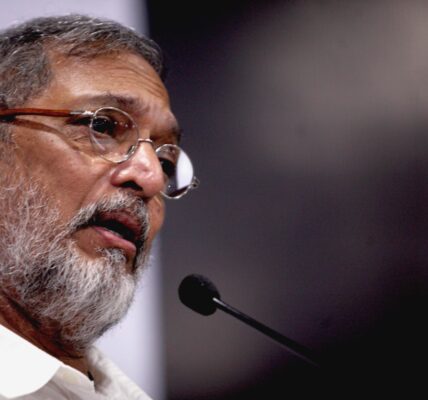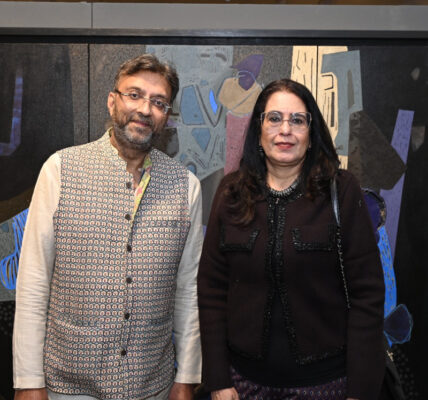Choti choti si baat…

By Sanjay Dayal
Na jaane kyun hota hai ye zindagi ke saath , Achanak ye Maan kisi ke jaane ke baad, kare uska intezaar ; choti choti si baat “….
This intriguing song sums up Basu Chatterjee for me.
Chatterjee, who started as a cartoonist in Russi Karanjia’s Blitz before shifting to films, was a creative visual artist. He made movies that were not just about his thinking but actually about the doing it most realistically. Chatterjee always thought about how to do his best in the given situation .
I read some brilliant lines by Author Bhattacharjee, who wrote extensively on him. And it actually sums up Chatterjee: “Bombay was back in the centre of things in the 1970s, witnessing with the birth of the Angry Young Man. But for Basu the Mumbai was not about the story of the young man into crime and turning super-rich. It charted the journey of persistent people and families who took one step a day to improve upon yesterday’s baseline.” Chatterjee was a master of many memorable scenes. In his films Basu chatterjee allowed the female protagonists to fall in love more than once. And that remains hallmark of his filmmaking.
Fondly called Basuda, his interest in filmmaking was nourished by the 1960s film society movement. A quiet, soft – spoken, gentle human, who delved into social and moral issues, he was a director ahead of his time, an effortless genius, and almost a starting point of a new cinema universe, with lifelike characters, in tandem with his namesake Basu Bhattacharya and Hrishikesh Mukherjee.
Chatterjee made a star out of Amol Palekar, as a slim, medium-statured mild – mannered person at a time when the ‘70s were dominated by Amitabh Bachchan’s volcanic Angry Young Man persona. He made it a point to cast relatively unknown faces to inject realism into his fims. He later presented reputed stars in unique avatars.
The growing up years when Doordarshan was the only staple entertainment for us in a small town , I literally grew up watching the fearless , social reformer Rajani.
The idea centered around the character of a woman troubleshooter, the kind of female who barges into all kinds of situations where men or angels normally fear to tread. The idea was to create a wholly Indian character not merely coping with routinely Indian problems but fighting them and somehow re-solving them.Rajani’s weekly, Sunday morning battles are tiny but not trivial. The first hint of controversy came in an episode when she discovered that like countless consumers she would have to wait for days to obtain a cooking gas cylinder while those willing to pay an illegal premium could obtain one promptly.
Another serial at that time which I enjoyed watching was Kakkaji kahin .
Kakaji Kahin is an Indian political satire that aired on Doordarshan in 1988. It was one of Basu Chatterjee’s acclaimed works for Indian television, based on a book called Netaji Kahin by well-known author Manohar Shyam Joshi.
The 1992 TV series “Byomkesh Bakshi,” directed by Basu Chatterjee and starring Rajit Kapur as the iconic sleuth, is a timeless masterpiece that captivates audiences even decades later. As a child, the intricate plots and subtle nuances of this detective series might have eluded me, but revisiting it now reveals its true brilliance. “Byomkesh Bakshi” stood out for its fine storytelling, rooted deeply in Sharadindu Bandyopadhyay’s original works.
Watching “Byomkesh Bakshi” now, with a mature perspective, unveils a gem of Indian television that has stood the test of time, offering a perfect blend of intrigue, culture, and nostalgia.
1940s Calcutta, with its authentic sets and costumes, drawing viewers into a bygone era. Rajit Kapur’s portrayal of Byomkesh is both charismatic and nuanced, bringing the character’s keen intellect and moral integrity to life. His chemistry with K.K. Raina, who plays Ajit, adds a layer of warmth and camaraderie that enhances the narrative.
Through the 1970s and 1980s, he became associated with what came to be known as middle cinema or middle-of-the-road cinema filmmakers, such as Hrishikesh Mukherjee and Basu Bhattacharya, whom he assisted on Teesri Kasam (1966). Like their films, his films dealt with light-hearted simple stories of middle-class families often in urban settings.
Basu Chatterjee who was born in Ajmer, Rajasthan, India, in a Bengali family. His middle class upbringing reflected in the films that dwelled on areas which were far removed from the glamour of the blockbusters of the time.
His early career as illustrator and cartoonist and lot of potryal of simplicity of life in movies comes out of that creative streak.
The deviation such as Ek Ruka Hua Faisla (1986) and Kamla Ki Maut (1989), which delved into social and moral issues. He is best known for his films
Us Paar, Chhoti Si Baat (1975), Chitchor (1976), Rajnigandha (1974), Piya Ka Ghar (1972), Khatta Meetha, Swami (1977), Baton Baton Mein (1979), Priyatama (1977), Man Pasand, Hamari Bahu Alka, Shaukeen (1982), and Chameli ki shaadi.
Chatterjee’s films were known for their realistic portrayal of everyday life and their focus on human emotions. He often used non-professional actors and emphasized natural performances. His films were also known for their memorable music, which often played a crucial role in enhancing the mood and atmosphere.
Basu Chatterjee’s contributions to Indian cinema were significant, and he is remembered for his unique style and his ability to capture the essence of middle-class life on screen.
My personal favourite is the movie Rajnigandha. The conflict of the mind for the heroine when she visits her hometown and meets her ex lover.
The inclination and the strong pull towards reliving the past, which is incredibly portrayed and often seductively appealing with her first love as compared to the relatively mundane yet trustworthy and reliable present is the primary focus of the film which is done is a very neat manner in the film especially considering that the film was made in the 70s. And in that respect,it was a film ahead of its time in relation to the themes, characters, some dialogues, techniques.
Basu Chatterjee had the ability to choose a short story and weave it so beautifully in a full length movie with songs which will be in your system for very long . Rajnigandha and then Choti si baat are movies which can be seen on any lazy afternoon and you will come out completely taken in by it .
Chatterjee assisted director Govind Saraiya when the latter made Saraswati Chandra in 1968. In both Teesri Kasam and Saraswati Chandra, Chatterjee excelled in introduction scenes and worked well on imagery. Both movies had beautiful pieces of music, absolutely incredible. There was a dynamism and physicality in both movies.
The 70s Mumbai too can be seen in these movies with nostalgia ..the Fiats, the buildings then and the secretary working on a Remington type writer . These scenes are so vivid and beautifully portrayed.
Basu Chatterjee’s Chhoti Si Baat is a cult classic love story that has one of the memorable screenplays I have ever seen in romance genre. Basu the genuis mixes reality with surrealism & that too all in light hearted manner. It won Filmfare award. Script itself is so brilliant that there is no need to sell and Salil Chaudhary composes some ever lasting songs. Title track is just amazing . Amol Palekar’s transformation from shy innocent guy to super confident one is nicely narrated. Palekar effortlessly plays both characters while Vidya Sinha as girl next door looks drop dead gorgeous even in floral printed sarees. But it is veteran actor Ashok Kumar & Asrani that generates the maximum laughs, former with his persona & latter with his buffoonery. Basu even incorporates some stellar cameos by Amitabh Bachchan and Dharmendra.
He passed away on June 4, 2020, leaving behind a legacy of memorable films that continue to resonate with audiences.
The songs of his movies will last for ever .. I will end with the lyrics from Rajnigandha:
“Kai baar yu bhi dekha hai , ye Jo Maan ki seema Rekha hai, Maan todne lagta hai “
The scene portrays the ex lover and the heroine in car ..when they travel together as heroine is visiting her hometown and gets in conflict between present lover in her life and meeting the ex in her hometown .The scene is brilliant as these lines plays ..the heroine saree pallu flows towards the ex lover and he touches it . This scene for me is unforgettable till now .












